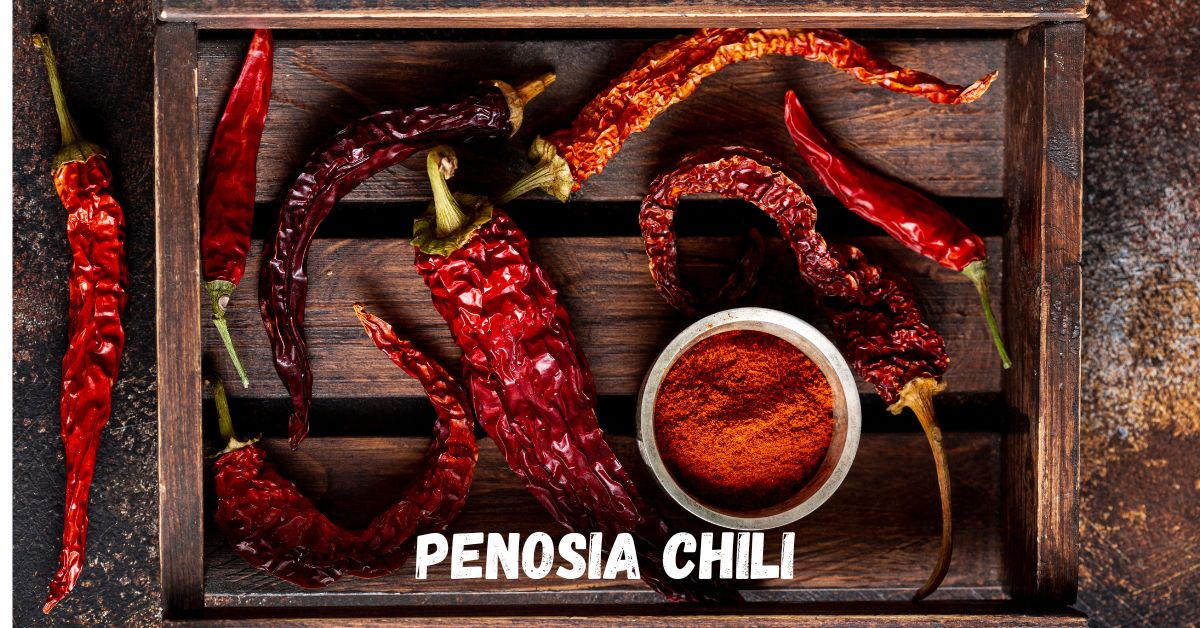Penosia chili, a distinctive chili pepper known for its remarkable combination of spice and sweetness, has gained international recognition for its culinary versatility and potential health benefits. Originating from the warm climates of South America, this unique chili is appreciated by both culinary enthusiasts and health-conscious individuals alike. Its moderate heat and tantalizing flavor make it a popular ingredient in many dishes, enhancing everything from sauces to salads. This article delves into the rich history, culinary uses, and health benefits of the, showcasing why it has become a staple in kitchens worldwide.
The Origin and History of Chili
The traces its roots back to the tropical and subtropical regions of South America, where it thrives in consistently warm temperatures. The chili’s name is derived from an ancient local word meaning “fiery essence,” reflecting its bright red appearance and its moderately spicy flavor. For centuries, this chili has been a cornerstone of traditional South American cuisine, used in everything from sauces to stews to add depth and warmth.
Historically, the was cultivated in regions that enjoyed year-round warm weather, particularly in countries like Brazil, Peru, and Colombia. Farmers in these regions have long known that the combination of rich soil and plenty of sunlight are key to producing the vibrant red peppers that have become synonymous.Today, this chili is celebrated not only for its heat but for its distinct balance of flavors that include subtle sweetness.
Characteristics of Penosia
One of the defining features of the is its small, slender shape. Typically, the chili grows to about 2-3 inches in length and is bright green when immature, transitioning to a vivid red as it ripens. This vibrant red color is a clear indicator of its full maturity and enhanced flavor. Unlike many other chilies known primarily for their heat,it offers a more complex flavor profile, blending spiciness with a touch of sweetness, making it a versatile ingredient in both sweet and savory dishes.On the Scoville Heat Scale, which measures the spiciness of chili peppers, the it ranks between 30,000 to 50,000 Scoville Heat Units (SHU). This places it in the medium-hot range, comparable to cayenne pepper. It is hot enough to excite the palate without overwhelming those who may not have a high tolerance for extreme heat. This moderate heat makes the it a great choice for those who enjoy a bit of spice in their food but prefer it to be balanced with flavor.
Culinary Uses of Penosia Chili
Thanks to its unique flavor and moderate heat, it has found its way into a variety of culinary applications. Whether it’s used fresh, dried, or pickled, this chili adds a vibrant kick to many dishes. Here are some popular ways it is incorporated into cooking:
1. Hot Sauces and Marinades
It is often used to make hot sauces that enhance grilled meats, tacos, and even sandwiches. Its sweet undertones balance the heat, creating a flavorful sauce that complements a wide range of dishes. When combined with ingredients like garlic, lime, and vinegar, it becomes the base of marinades for meats such as chicken, beef, and seafood, imparting a smoky, spicy flavor.
2. Stir-fries
When added to vegetable and meat stir-fries, it brings both heat and visual appeal. The bright red pepper adds a burst of color to dishes and enhances the flavors of fresh vegetables and protein. Sliced it can be sautéed with garlic, onions, and soy sauce for a stir-fry that balances savory, sweet, and spicy notes.
3. Salads and Sandwiches
For those who enjoy a bit of spice in their cold dishes, it can be a surprising and delicious addition to salads and sandwiches. Chopped into small pieces, the chili adds a burst of heat to fresh greens, tomatoes, and avocado in salads. It can also be used as a spicy topping in sandwiches or wraps, where its sweetness can enhance the flavors of smoked meats, cheeses, and fresh vegetables.
4. Pickled Penosia Chili
Pickling is a common method used to preserve the chili while softening its heat. Pickled it takes on a tangy, spicy flavor that works beautifully as a topping for tacos, grilled meats, or even pizza. Pickling the chili brings out its sweetness and gives it a milder heat, making it more accessible to those who prefer less spice in their dishes.
Health Benefits
Beyond its culinary uses, it boasts several health benefits that make it a valuable addition to a balanced diet. Like many other chili peppers, it contains capsaicin, the compound responsible for the heat in chillies which is known for its anti-inflammatory and pain-relieving properties. Here are some of the key health benefits associated:
1. Rich in Vitamin C
It is an excellent source of vitamin C, a powerful antioxidant that supports immune health, helps repair body tissues, and promotes skin health. A single serving of can provide a significant portion of the recommended daily intake of vitamin C, making it a great addition to any diet.
2. Aids in Digestion
The moderate heat of the it can stimulate digestion and increase the production of digestive juices. Capsaicin, the active compound in the chili, has been shown to help reduce bloating and promote a healthy digestive system.
3. Supports Weight Loss
Studies suggest that capsaicin may also support weight loss by boosting metabolism and reducing appetite. Consuming chili peppers like Penosia can increase energy expenditure, leading to more calories burned throughout the day. Additionally, the heat from the chili can create a temporary thermogenic effect, helping to accelerate fat burning.
4. Heart Health
Regular consumption of chili peppers, including Penosia, has been linked to improved heart health. Capsaicin may help lower cholesterol levels and reduce inflammation in blood vessels, which can lead to better cardiovascular function.
Conclusion
It is more than just a source of heat in the kitchen—it’s a flavorful, health-boosting ingredient that has earned its place in global cuisine. Originating from the warm climates of South America, this chili has captivated the taste buds of those seeking a balance of spice and sweetness in their dishes. Its versatility makes it ideal for a wide range of culinary uses, from stir-fries and hot sauces to salads and pickled condiments. Alongside its delicious flavor, the offers impressive health benefits, including boosting immunity, aiding digestion, and supporting weight loss.
FAQs
What is the heat level of chili?
It has a moderate heat level, ranging from 30,000 to 50,000 Scoville Heat Units (SHU).
Where does It come from?
It originates from South America, thriving in areas with warm, tropical climates.
How is it used in cooking?
It is versatile and can be used in hot sauces, stir-fries, salads, and even pickled for a milder heat.
What are the health benefits?
It’s rich in vitamin C, supports digestion, and may help boost metabolism and heart health.
What makes it unique?
Its flavor is a blend of moderate spiciness and sweetness, making it distinct from other chili peppers.

